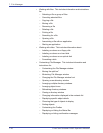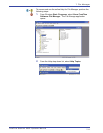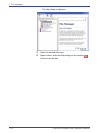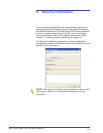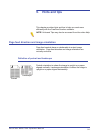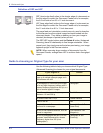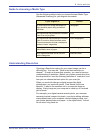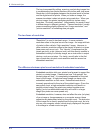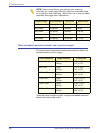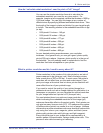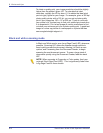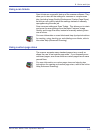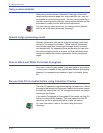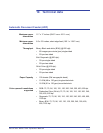
DocuColor 8000/7000 Operator Manual
9-4
9. Hints and tips
The key to successfully editing, scanning, and printing images lies
in understanding how pixels transform into inches and vice versa.
Resolution is the interpreter between the physical world of inches
and the digital world of pixels. When you scan an image, the
scanner translates inches into pixels using resolution. When you
print an image, the printer translates pixels into inches using
resolution. So what's resolution? Unfortunately, the word is used
in different ways in different contexts. "Camera resolution" usually
means something slightly different from "image resolution,” and
"printer resolution" is something else yet again.
The two faces of resolution
“Resolution” is used in two basic ways. In some contexts,
resolution refers to the pixel count of an image. An image with lots
of pixels is often called a "high resolution" image. However, in
other contexts, resolution refers to the density of pixels in a given
linear area such as an inch. This "density" is expressed as ppi
(pixels per inch) or dpi (dots per inch), and this density number is
embedded invisibly in a bitmap image, as an instruction to output
devices, such as a printers. For clarity, we will refer to the first
type of resolution as pixel count resolution and the second as
embedded resolution.
The difference between pixel count resolution & embedded resolution
Embedded resolution tells your printer how far apart to spread the
pixels in a printed image. It determines how "fine grained" the
printed image will look. It is completely independent of the pixel
count of the image. A high-pixel-count image can have a low
embedded resolution or vice versa. Embedded resolution is
inversely proportional to the size of the printed image. Given the
same pixel count, a high embedded resolution will result in a
smaller printed image (the pixels are packed together more
tightly), and a low embedded resolution will result in a larger
image (the pixels are more spread out).
Embedded resolution, however, does not affect the size (in bytes)
of your image or its appearance on a computer screen; those
properties are determined solely by the pixel count. The byte-size
of the image file is directly proportional to the pixel count, as is its
size on your computer screen, which simply displays all the pixels
in the image in a fixed one-to-one grid.



